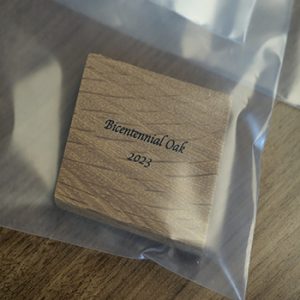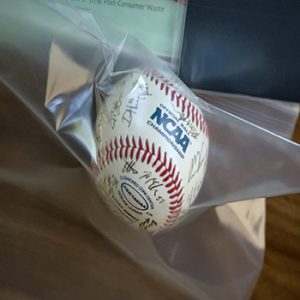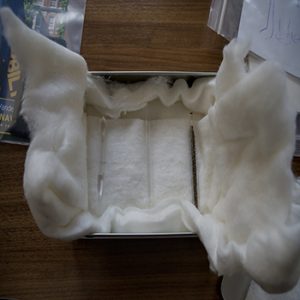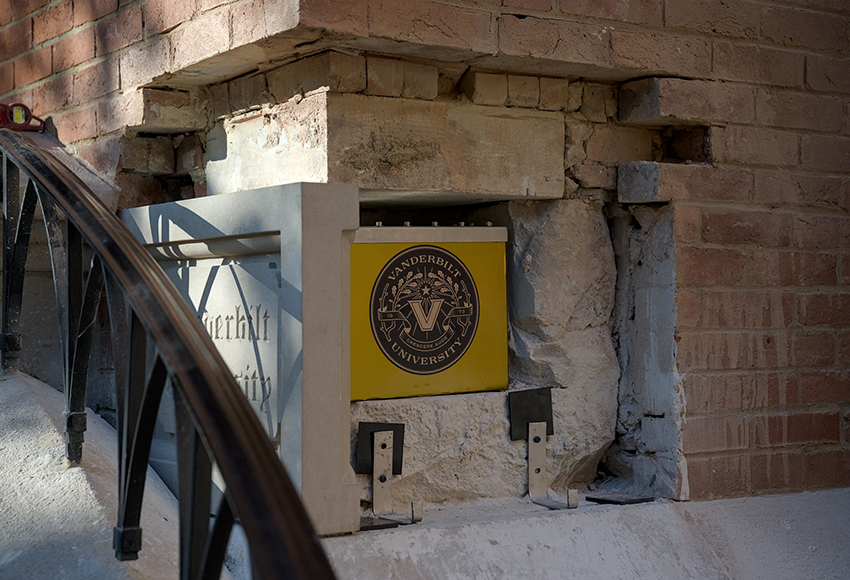
Story by Ann Marie Deer Owens
What do a Commodore ID Card, a piece of the Bicentennial Oak, a baseball signed by two-time national championship-winning head baseball coach Tim Corbin, and a video of the 2019 Carmichael Tower implosions all have in common? They are among more than 150 items that future generations will discover in a Vanderbilt time capsule to be opened in the year 2174.
Last spring, the Jean and Alexander Heard Libraries began collecting and curating materials—both physical and digital—to provide insight into campus life and the university’s values and priorities during its 150th year.
“Our first step was to study the list of items placed in the 1874 time capsule and consider the many ways Vanderbilt has ‘dared to grow’ in the 21st century,” said Tim Gollins, director of Special Collections and University Archives. “The university’s commitment to fostering a more inclusive and supportive culture has been a key inspiration and driving force behind our efforts.”
An electronic survey polled the Vanderbilt community for suggestions on items to include. More than 50 university schools, departments, campus organizations and individuals responded with recommendations that included: drone video footage of campus; Campus Dining recipes and menus; a WRVU-curated playlist; materials from the K.C. Potter Center for LGBTQI Life; a composite photograph of Greek Life officers; statements from the University Staff Advisory Council, faculty and various student leaders on their vision for the future of Vanderbilt; and Chancellor Daniel Diermeier’s 2024 Founders Walk address, in which he highlighted the time capsule.
“On stage with me today is a time capsule—an apt symbol of past and future—which we will inter this year in Kirkland Hall as part of Vanderbilt’s Sesquicentennial—the celebration of our 150th anniversary as an institution,” Diermeier told the Class of 2028, transfer students and incoming members of the Next Steps program gathered for the annual start-of-year tradition on Aug. 18. “We recently unearthed Vanderbilt’s first capsule, which was interred in that same building during our founding year.”
When Vanderbilt leaders opened the 1874 time capsule in February 2023, they discovered that water and mold had caused significant damage to the contents; so, the libraries’ staff stepped up preservation efforts for the new one. It is a steel box with approximately the same dimensions in inches as the original copper one—11 by 11 by 10. One way it differs is the addition of a nozzle used to remove oxygen, which causes paper to deteriorate. The nozzle also pumps in nitrogen, an inert gas that reduces oxidation. In addition, the staff sought acid-free paper for any typed or printed documents going in the capsule.

While there are digital items such as CDs, DVDs and memory sticks in the new time capsule, a huge question remains on whether the data will be readable in 150 years.
“The world has shifted in the past few decades from one of paper to digital,” Gollins said. “So, what does a time capsule look like in the virtual world? The reality is that we cannot be confident in the survival of digital content inside time capsules. Digital technology is comparatively young and changes so fast that we cannot know what will or will not be readable or interpretable in 150 years.”
“Our answer is to keep two of everything, one in the time capsule and a duplicate in the university’s environmentally controlled archives. They will be maintained in perpetuity,” University Archivist Kathleen Smith said. “Meanwhile, copies of all the electronic materials, such as photographs and videos, are being stored in a digital environment that is active and periodically converts the materials into new, readable forms.”
For example, artwork by Susan Gray School students who were asked to “draw the future” on letter-size paper is going into the time capsule, with scanned, digital copies uploaded to the archive’s cloud. On the other hand, a custom magnet with a photo of the national championship Vanderbilt bowling team will be stored in the archive since magnetic fields can damage technology.
A recommendation to include one of the hugely popular Rand cookies was not feasible—no vegetation or plants allowed in the time capsule—but Assistant Archivist Faith McConnon obtained a Rand cookie squeeze toy as an alternative.
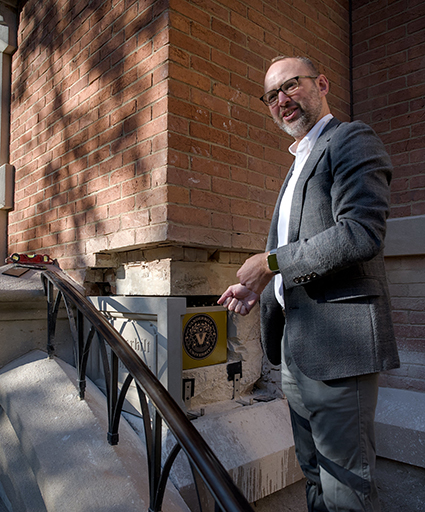
(Tim Gollins/Vanderbilt)
Vanderbilt’s focus on environmental protection is represented in the capsule and the archive with samples of campus soil, air and ground water. McConnon worked closely with Christopher Vanags, director of the Peabody Research Office and research assistant professor of earth and environmental sciences, and Allison Walker, assistant professor of biological sciences and chemistry, to capture contaminant-free samples. They were collected from the Native Meadow tucked behind the 6 Magnolia Building on the Peabody College campus.
“When you review the contents of the 1874 time capsule, it reads like a history of the university’s early years, with a Bible, book of discipline, songbook, and Methodist newspapers from across the Southeast,” Smith said. “We are a completely different university 150 years later, and we have made sure that the new content reflects that.”
“The 2024 time capsule project goes right to the heart of what our University Archives team does so well—excellence in digital and material preservation and stewardship of Vanderbilt’s unique collections,” University Librarian Jon Shaw said. “The Heard Libraries are proud to collaborate with the Office of the Chancellor and many others across campus on this once-in-150-years initiative and to serve as the keepers of Vanderbilt’s cultural memory.”
